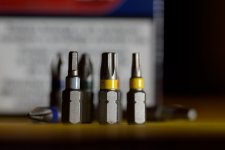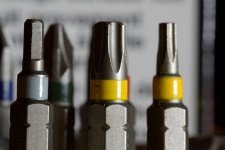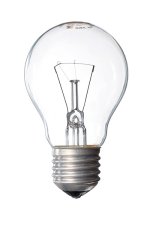Wayne, how often do I need to repeat that the DOF can be calculated and you get the exact same DoF by either closing down or shooting at a lower magnification?
I don't even understand that. I see the words, but too bizarre. Repeating can't help. I'm hoping you just typed it wrong.
No, the facts are that depth of field can be crudely APPROXIMATED by calculation. There is little magic in it, the formula just uses someones ARBITRARY estimate of CoC (history has had several different estimates of it), and which applies only to a standardized magnification of that CoC into a viewing situation. Which CoC involves an 8x10 inch print viewed at 10 inches, which you ignore. We can ignore the formula and speak of relative DOF being greater or less, but if calculating wishful numbers, the standard situation overwhelmingly applies (and it is still an approximation).
Plus, you're calculating for macro, and you don't even know the focal length at macro. If at 1:1, then the focal length by definition is equal to the subject distance in front of lens (so to speak, the Thin Lens equation), but which is actually computed to the internal lens node that you don't even know either. Your DOF numbers are just very coarse guesses (and apply to the standard situation anyway). The DOF formula will work better at like ten feet (but still just an approximation).
You really never have noticed that stopping down obviously improves DOF? That can't be what you meant, since DOF is about things like aperture. Everyone knows that is the fundamental. It's really hard to believe you actually said that, but it might explain why you're not getting it.

Look at your own pictures above, at the green bit and the text background. Not good examples, but they still make the point.
It's not about shooting at lower magnification. That just requires greater viewing enlargement. It can include subject distance and focal length, but also is about enlarged print size. It's all about viewing the overall magnification. It is about what the eye sees, and the numerical concept is also based on viewing and judging an 8x10 inch print at 10 inches. This is why the CoC estimate changes with sensor size, it's about that OVERALL magnification to the eye.
The overall concept of calculating DOF NUMBERS is about the overall magnification which enlarges the tiny CoC on the sensor plane to be a size that the eye can perceive it (in that standard viewing situation). You ignore all of that. It also greatly magnifies any error of an arbitrary estimated CoC value, so the numbers are at best just an approximation. The things more important to know are the factors (aperture, focal length, subject distance, and sensor size) that allow us to improve RELATIVE DOF, for a better overall image.





